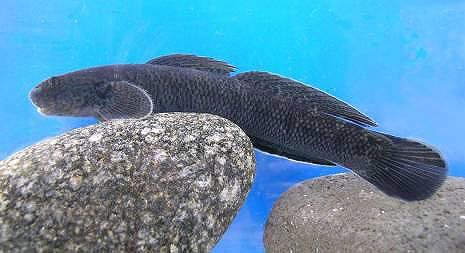-
 Abortion
Abortion
-
 Minerva
Minerva
-
 Earth electrode
Earth electrode
-
 Orion
Orion
-
 Dextrorotatory
Dextrorotatory
-
 Quantum cryptography
Quantum cryptography
-
 Osteoblast
Osteoblast
-
 Emergence
Emergence
-
 Dryas
Dryas
-
 Cardiac myocyte
Cardiac myocyte
-
 Terra
Terra
-
 Firmware
Firmware
-
 Acini
Acini
-
 Augmented reality
Augmented reality
-
 Coagulation
Coagulation
-
 Sensitive Natural Space
Sensitive Natural Space
-
 Fine structure constant
Fine structure constant
-
 Endosymbiosis
Endosymbiosis
-
 Hydrophile
Hydrophile
-
 Granivore
Granivore
-
 Tau
Tau
-
 Plain text
Plain text
-
 Fault
Fault
-
 Steroid
Steroid
-
 Ambulacra
Ambulacra
-
 Tetrapods
Tetrapods
-
 Microblogging
Microblogging
-
 Byte
Byte
-
 Algae
Algae
-
 Spinal cavity
Spinal cavity
Cotylopus acutipinnis
According to the French national red list Cotylopus acutipinnis is a threatened species in France.
Two closely related cousins of the species live in the clear and oxygen-rich waters of Reunion Island: Sicyopterus lagocephalus and Cotylopus acutipinnis, the latter is endemic to the Mascarenes.
In terms of abundance, Cotylopus acutipinnis is a dominant species in the island's piscicultural freshwater stocks. These gobies have a unique life cycle: adults live and reproduce in rivers, while their larvae spend a few months growing in the sea and return to the river to finish their metamorphosis and become juveniles and then adults. These fish can be found at high altitudes for they are very skilled at clearing obstacles.
French national red list category: near threatened (NT)
Populations of Cotylopus acutipinnis are naturally subject to very high variations. However, obstacles preventing the free circulation of individuals such as dams limit both colonisation in their natural habitat as well as the completion of their reproductive cycle. Juveniles, colloquially referred to as “bichiques”, are fished in great numbers at the mouths of rivers when they return to fresh water. This is a major source of pressure on the species.
On the other hand, in a few rivers of Reunion Island, there is also the pressure of poaching adults, which it is prohibited to fish. Considering these sources of pressure, the population has probably experienced a drastic decline since the 1980s. In the light of the decline documented over the last few years the species is already classified “near threatened”.
Sources:
- IUCN France;
- MNHN;
- SEOR;
- ARDA ;
- Reunion Island Insectarium;
- GLOBICE & Kélonia (2010);
- Red list of threatened species in France - first chapters dedicated to the fauna of Reunion Island.
 Cotylopus acutipinnis. © ARDA
Cotylopus acutipinnis. © ARDA
Latest
Fill out my online form.



